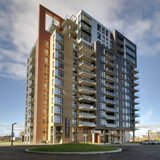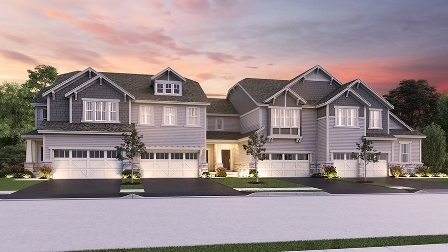Home Insurance Coverage's
Homeowners or HO-3: Written for the primary residence, this is the most common of homeowners policies and is designed to cover all aspects of the home: the structure, contents (personal property). There are generally other coverage’s built in to the policy and the premiums are usually based on several factors. The costs are determined by such factors as the age of the home, fire and burglary protection, size (for replacement cost), improvements and/or updates to the home.
Dwelling
Dwelling coverage - is the estimated amount to cover rebuilding your home, once rebuilt the market value is restored, hence the concept of indemnity or "to make whole." You never insure the dwelling to the market value, tax appraised value or market value. If you did you could never afford insurance for your house. Dwelling coverage homes - is the total estimated rebuilding cost of the house and other structures on your property (fences, sheds, carports, etc.). homeowners tend to require a good deal more dwelling coverage.Personal Property aka Contents - Insuring personal property is the responsibility of condo and homeowners, typical personal property doesn't include kitchen appliances, it is covered in dwelling. You can chose replacement cost v actual cash value.
Other Structures
Other structures coverage is the part of a homeowners insurance policy that helps pay to repair or replace structures other than your home, such as a fence, if they are damaged by a covered risk. For instance, if a tree falls on your detached garage, other structures coverage may help pay for repairs.
Here are a few things to consider about other structures coverage. Items on your property that typically fall under other structures coverage include a fence. In-ground pool, detached garage and a gazebo. Other structures on your property are typically covered for the same perils as your home. So if your dwelling coverage includes risks like theft, fire, falling objects and vandalism, your fence would likely be covered for those, too. Read your policy to learn what perils it covers.
How Much Coverage will I have for other structures?
You may find that other structures coverage is based on a percentage of your dwelling coverage, the Insurance Information Institute says. So, for instance, if you have $300,000 in dwelling coverage, which applies to your house and attached structures, you may have up to $30,000 in coverage for your fence and other unattached structures on your property.
If you're making improvements to your property, such as adding a gazebo, you may want to review your other structures coverage limits to help ensure you have enough protection in place to help pay to repair or replace unattached structures after a covered loss.
I will help you adjust your coverage limits.
Personal Property
Personal property insurance, also known as "contents insurance," reimburses you in the event that your possessions within the home (whether you own or rent) are damaged, destroyed, lost or stolen. What does personal property insurance cover?
Personal property insurance covers the contents of your home, your personal possessions. Do you actually need personal property insurance? To find out, grab a camera or smart phone and begin walking through your home, room by room, opening closets and drawers, and snapping pictures of everything that is not nailed down:
Furniture
Clothing
Appliances
Stereos
Televisions
Computers
Artwork
Rugs, window treatments and other décor
Dishes
Wine and spirits
Sporting goods and toys
As you take this visual inventory, imagine what it would cost if everything was lost in a flood or fire--could you afford to replace what's most important to you? If not, you might need personal property insurance.
Loss of Use
n the unfortunate event that you were temporarily unable to live in your home or property due to an incident, how much money would that cost? Depending on how long you had to wait while your home is being rebuilt or repaired, the total cost could really add up. That’s where loss of use insurance kicks in. Also referred to as additional expenses insurance or part D coverage, loss of use homeowners insurance covers living expenses that you incur if your home is deemed uninhabitable as the result of a covered peril.
If you were forced to move out of your house or even a rental property due to damage caused by a fire, for instance, loss of use insurance would help to cover costs such as your hotel stay, rental or a temporary apartment or restaurant bills while your residence is being repaired or rebuilt.
What expenses are typically covered by loss of use?
Loss of use coverage is typically built into your homeowner's insurance policy. While there are limits to what and how much your insurance provider will reimburse you for, the below items are usually covered to help you maintain your current standard of living:
Temporary residence such as a hotel, motel or apartment
Moving costs
Excess of normal grocery or restaurant bills
Storage costs for household items
Laundry expenses
Transportation fees
Parking fees
Pet boarding
Loss of use coverage can help provide the peace of mind and financial assistance you need in the event you are suddenly displaced from your home. Be sure to review your home insurance policy or renters insurance policy to make sure you are adequately covered.
Personal Liability
Personal liability occurs in the event an accident, in or out of your home, that results in bodily injury or property damage that you are held legally responsible for. Personal liability claims could include medical bills, legal fees and more if a guest is injured on your property, as well as coverage for accidental damage you are legally responsible for on someone else’s property. If you have personal liability coverage, you may be able to avoid paying out of pocket for incidents like these, up to your coverage limits. That’s why personal liability coverage is an important component of your homeowners insurance or renters insurance policy.
Now that you know the definition of personal liability insurance, here's a real life example: let's say a guest visits your home and while walking through your garage is hit by a falling ladder. The guest suffers a broken arm and sues you for damages – which can be thousands of dollars. This is where personal liability insurance can kick in. Personal liability will cover the costs of medical bills, as well as your legal defense fees, up to the limit of your liability coverage. However, personal liability coverage may also be able to cover an incident that occurs outside your home or property.
What does personal liability insurance cover?
Under your basic homeowners insurance or renters’ insurance policy, personal liability coverage may protect you under the following circumstances, up to your policy limits:
Lawsuits you may face if an accident occurs
Bodily injury to an individual
Property damage that occurs as a result of your negligence
If the liability limits of your policy don’t meet your needs, you may want to consider additional coverage such as personal umbrella liability insurance, which provides an extra layer of personal liability protection. This will help to cover costs if there's a serious auto accident or accident on your property that exceed the limits of your liability coverage.
What isn’t covered by personal liability insurance?
While your standard home or renters insurance will cover certain personal liability claims, there are other claims that may not be covered, such as:
Liability resulting from an automobile accident (this will typically be covered by your auto insurance)
Bodily injury or property damage caused intentionally by you or a family member in your home
Injuries or damages sustained by you or family members in your home
Business activities or claims related to your profession
Be sure to carefully review your home or renters policy so that you have a solid understanding of what is and isn’t covered by personal liability insurance. If you don’t currently have personal liability coverage for your home, contact us to get a home insurance quote today. Choose the personal liability policy limit that’s right for you and start getting the coverage you need.
Inspections
You may need to have 2 types of inspections done for insurance to prove your insurability and or get credits. One is the 4 point Inspection assesses the condition and useful life of your roof, electrical, plumbing and air conditioning. You cannot have any deficiencies and certain electrical panels are not allowed. Roof must be in good condition and have at least 3 years of useful life with no signs of leaks or disrepair. The other inspection is the windstorm mitigation inspection which provides support to allow you credit for roof age, building code compliance, structure of roof and hurricane impact rated doors and windows. I addition the roof shape gable, flat or hip.



